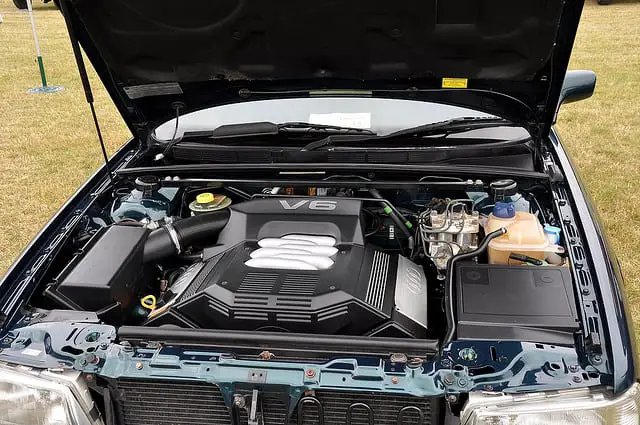What Does V6 Mean on a Car: Unleash Engine Secrets
If you are a car enthusiast, you might have heard the term V6 being thrown around quite often. But what does V6 mean on a car? In simple terms, V6 is a type of engine that has six cylinders arranged in a V-shape over the crankcase. The V6 engine is a popular choice for many car manufacturers due to its power and performance capabilities. In this article, we will explore everything you need to know about the V6 engine and why it’s so popular in the automotive industry.
Overview of the V6 Engine
As mentioned earlier, the V6 engine is a six-cylinder engine arranged in a V-shape over the crankcase. The V6 engine is commonly used in mid-sized vehicles such as sedans, SUVs, and pickup trucks. The V6 engine is a popular choice for many car manufacturers due to its power and performance capabilities. The two additional cylinders in the V6 engine means that power will be made more evenly throughout the RPM range, making the engine smoother and potentially faster than a four-cylinder engine.
The V6 engine is also larger in terms of displacement, which gives it an additional advantage for making power. The V6 engine is designed as two rows of three cylinders arranged in a V-shape over the crankcase. The cylinders share a common crankshaft, which makes the V6 engine more compact and efficient than other types of six-cylinder engines.
Firing Order of the V6 Engine
The firing order of the V6 engine is determined by the arrangement of the cylinders. In a V6 engine, the cylinders are arranged in two rows of three cylinders each. The firing order of the V6 engine is 1-2-3-4-5-6, with cylinders 1, 3, and 5 on one side of the V and cylinders 2, 4, and 6 on the other side of the V. The firing order of the V6 engine ensures that each cylinder is fired at the right time, which maximizes the engine’s power and efficiency.
Crankshaft and Connecting Rods of the V6 Engine
The crankshaft and connecting rods of the V6 engine are designed to work together to convert the up and down motion of the pistons into rotational motion. The crankshaft is the main rotating part of the engine that is connected to the pistons through the connecting rods. The crankshaft and connecting rods of the V6 engine are designed to be strong and durable to withstand the high stresses and pressures of the engine.
Crankshaft Layout of the V6 Engine
The crankshaft layout of the V6 engine is designed to be compact and efficient. The V6 engine has a shorter crankshaft than other types of six-cylinder engines due to its V-shaped design. The shorter crankshaft of the V6 engine means that it requires less space under the hood, making it a popular choice for mid-sized vehicles.
Crankshaft Rotation of the V6 Engine
The crankshaft rotation of the V6 engine is determined by the firing order of the cylinders. In a V6 engine, the cylinders are arranged in two rows of three cylinders each. The firing order of the V6 engine ensures that the crankshaft rotates in a specific direction, which maximizes the engine’s power and efficiency.
Disadvantages of the V6 Engine
Despite its many advantages, the V6 engine has some disadvantages that you should be aware of. One of the main disadvantages of the V6 engine is its cost. The V6 engine is more expensive to manufacture than other types of engines due to its complex design and additional cylinders. The V6 engine is also more complex to maintain and repair, which can add to its overall cost.
Another disadvantage of the V6 engine is its fuel efficiency. The V6 engine is less fuel-efficient than other types of engines due to its larger displacement and additional cylinders. The V6 engine is also heavier than other types of engines, which can affect the vehicle’s overall performance and handling.
Conclusion
In conclusion, the V6 engine is a popular choice for many car manufacturers due to its power and performance capabilities. The V6 engine is designed as two rows of three cylinders arranged in a V-shape over the crankcase. The V6 engine is larger in terms of displacement, which gives it an additional advantage for making power. The V6 engine also has a firing order that ensures each cylinder is fired at the right time, which maximizes the engine’s power and efficiency. Despite its many advantages, the V6 engine has some disadvantages that you should be aware of, including its cost, fuel efficiency, and weight.







